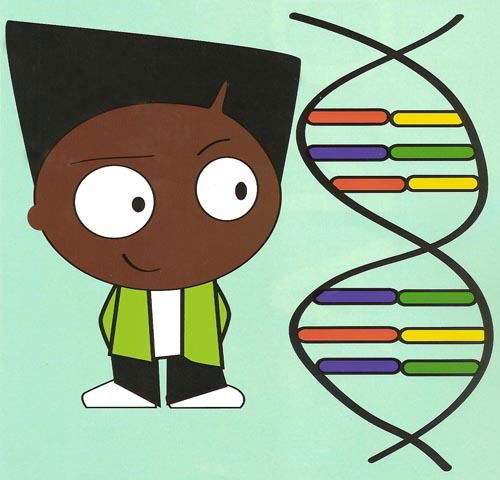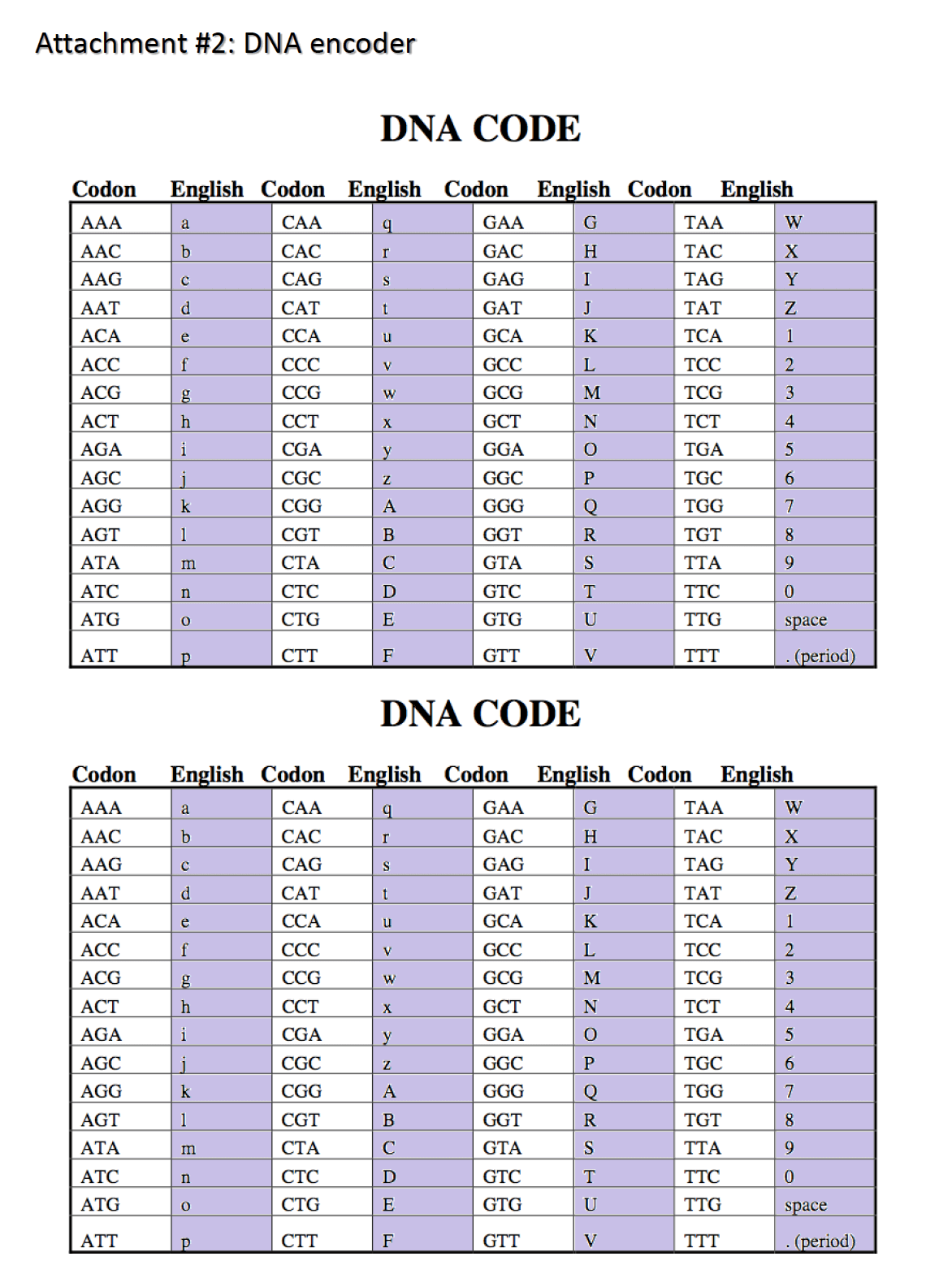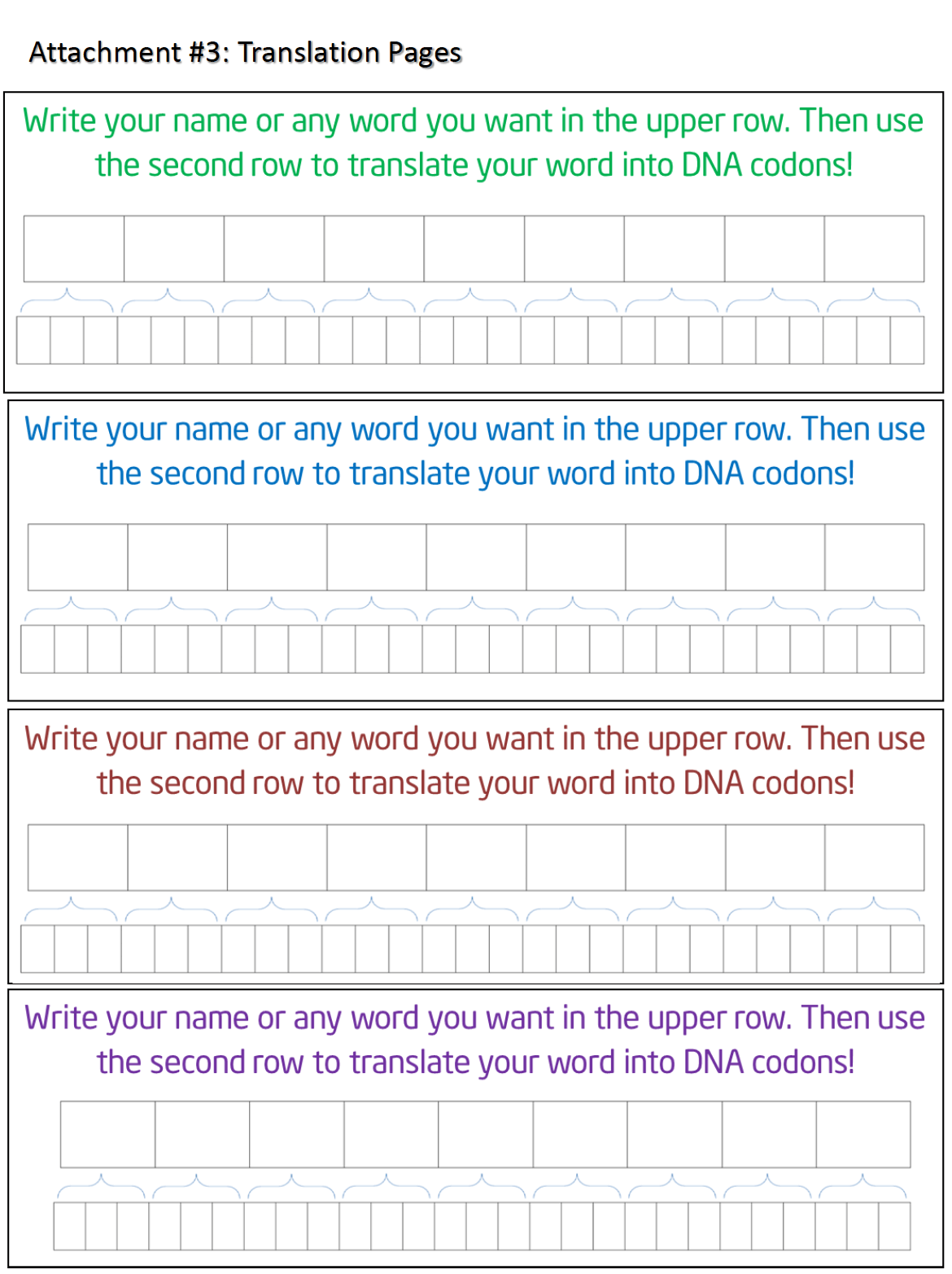Write Your Name in DNA

Image by https://www.daviddarling.info/
DNA is the material in the cells that carries all the information about how a living thing will look and function. For instance, DNA in humans determines such things as what colour the eyes are and how the lungs work. Each piece of information is carried on a different section of the DNA. These sections are called genes. DNA is found in structures of the cell called chromosomes. Both DNA and chromosomes are tiny. Scientists need to use very powerful microscopes to see them.
DNA has a complex structure. It is made of chemical substances that are linked together like a chain. Each piece of DNA has two long chains. The two chains are joined together. They form a shape like a ladder that has been twisted into a spiral.
Chemicals called phosphates and sugars make up the sides of the ladder. DNA also has chemicals called bases. Each base on one strand is joined to a base on the other strand. The linked bases form the rungs of the ladder. There are four different bases in DNA: adenine (A), thymine (T), guanine (G), and cytosine (C). The phosphate with its corresponding base, is called a nucleotide. Three nucleotides in a row make a codon and each codon makes an amino acid, that is the building block of proteins. So, each protein, that is a very important molecule for the functions of the living organisms, is coded through the DNA.
In the following activity we will try to use the DNA, to write words. We will create a colourful chain made out of the four DNA nucleotides. We will use an encoder to translate from the English alphabet into codons to write words into the chain.
What do you need?
-Colourful printed DNA letters (see attachment 1)
-Scissors and tape
-String or ribbons
-DNA encoder (see attachment 2)
-Translation page (see attachment 3)
Find a printable version of the attachments here: DNA_codons_activity.pdf
How does it work?
1.Write your name on the translation page and translate it into DNA letters using the encoder.
2.Choose, cut out and arrange the DNA base pairs as needed.
3.Tape them together, forming a straight chain, or tape them to a string to make a hanging decoration.



Original idea from iGem
Risk Assessment:
Making a spectroscope and Newton Wheel
| Hazard | Likelihood and Seriousness of Injury | Control measures | Assessment of remaining risk |
|---|---|---|---|
Cutting with scissors | Possible, serious injury unlikely | Ensure that scissors are being handled responsibly with adult supervision | Low |
Handling paper | Possible paper cuts, serious injury unlikely | Explain potential for cuts | Low |